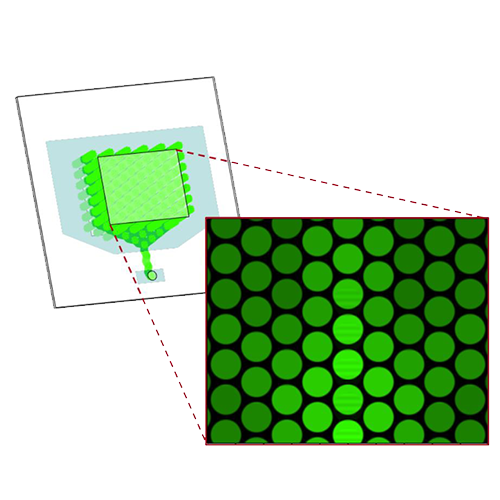Optical Design
with VirtualLab Fusion
Leveraging its proficiency in multiscale optical simulations, VirtualLab Fusion establishes itself
as a formidable platform for sophisticated optical design, offering a growing collection of design tools.
VirtualLab Fusion Optimization
VirtualLab Fusion includes an integrated parametric optimization tool, applicable to any system. The supplementary VirtualLab Fusion Optimization package can augment the optimization capabilities. The establishment of merit functions of any detector signal serves as the foundation for constructing an optimization problem. Optimization algorithms encompass techniques like the simplex method and simulated annealing. In its field tracing framework, VirtualLab Fusion facilitates ray tracing, aberration evaluation, and the calculation of MTF and PSF. Therefore, the optimization of lens systems through parametric methods is enabled. However, it currently does not offer the conventional lens design workflow. Stay tuned for future updates on this matter
in 2025!
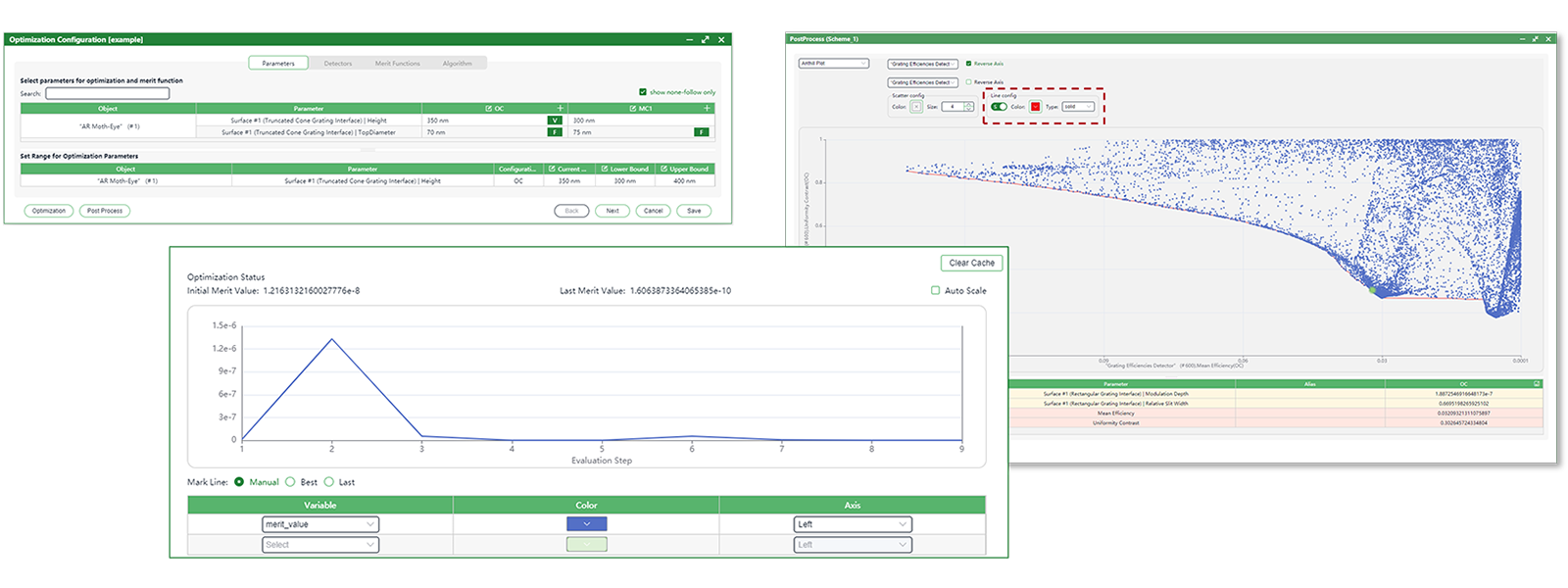
Metalenses and Diffractive Lenses
VirtualLab Fusion provides a set of tools aimed at designing diffractive and metalens surfaces, enabling the realization of a targeted phase modification through these lenses. After the design phase, the lenses may be integrated into optical systems, utilizing a tailored simulation model, and linked to additional lenses through field tracing. VirtualLab Fusion additionally offers a tool that facilitates the export of lens structures into fabrication-ready data formats. In 2025, expect new techniques for designing and simulating both diffractive and metalenses.
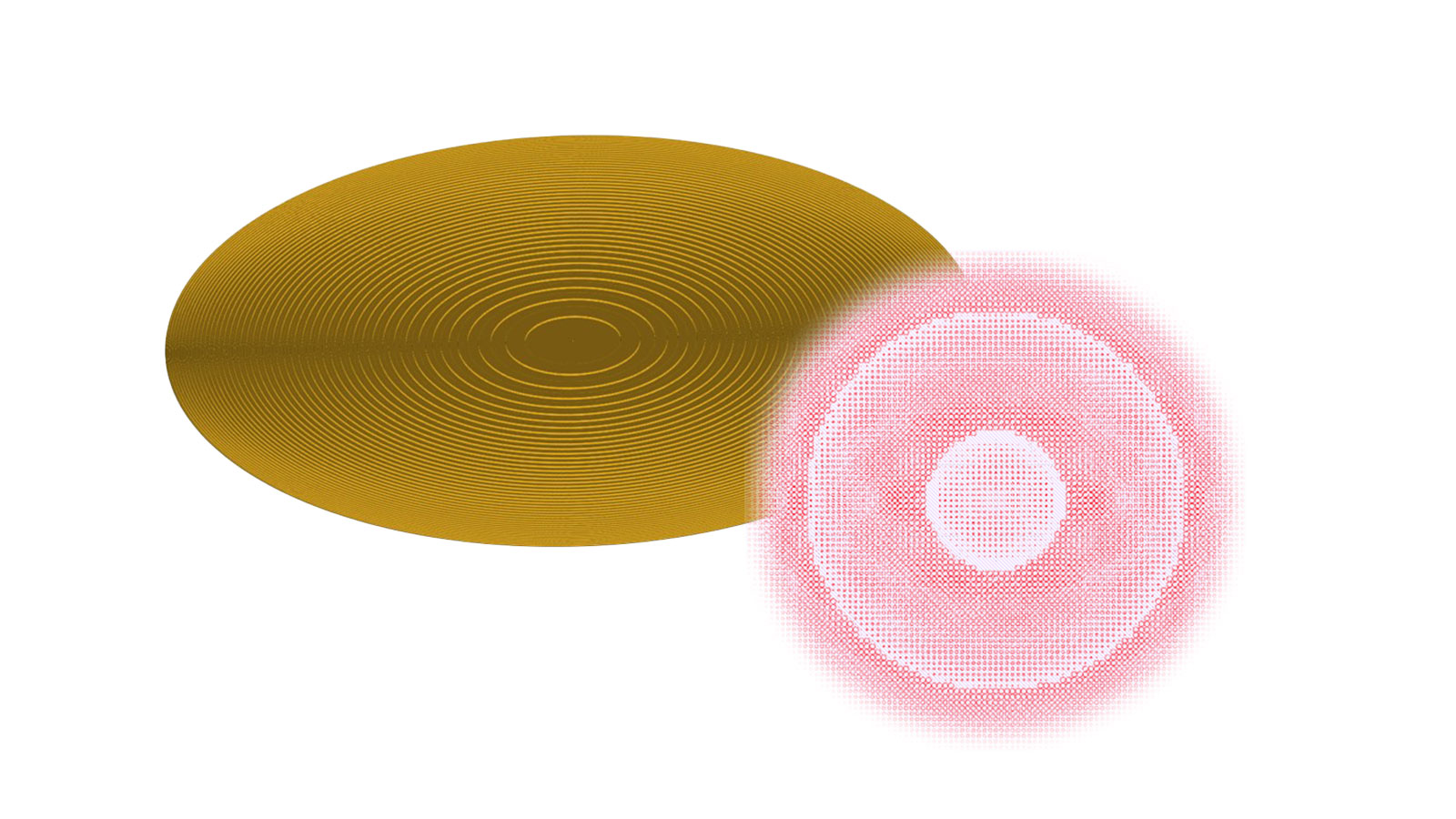
Height Profile Gratings and Metagratings
Within VirtualLab Fusion, one has the capability to define and optimize gratings using either a surface height profile or a metasurface. These gratings can be fine-tuned to function efficiently in a specific diffraction order or to generate multiple orders characterized by predetermined efficiencies. Additionally, it is possible to investigate and enhance polarization-dependent functionality.
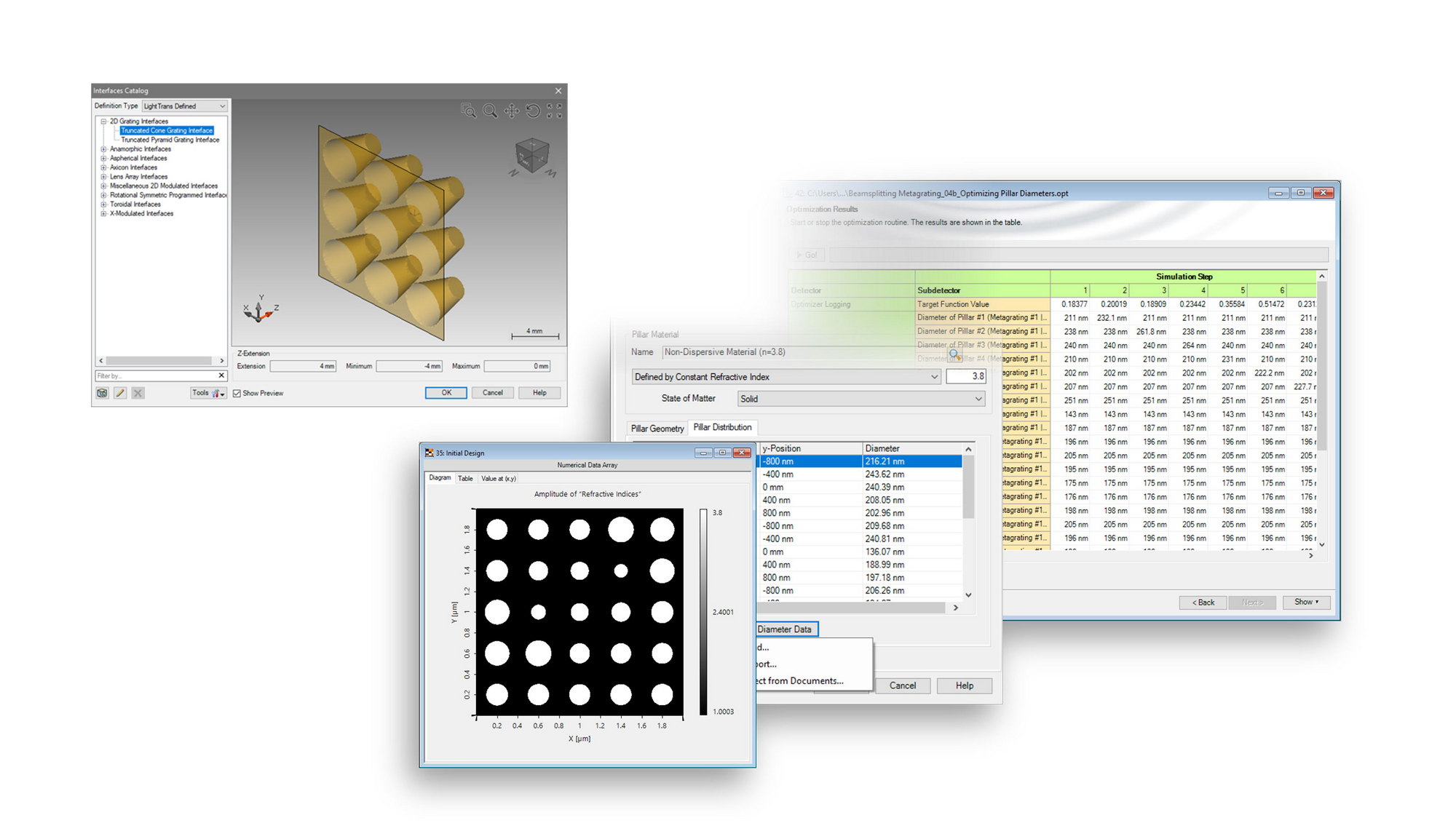
Diffractive Optical Elements: Beam Splitter
From the inception of diffractive optics, there has been significant interest in designing beam-splitting Diffractive Optical Elements (DOEs) to generate specified target patterns. These diffractive optical elements act as gratings within the paraxial and near-paraxial domains, possessing distinctly characterized efficiencies across numerous orders. VirtualLab Fusion provides a sophisticated Iterative Fourier Transform Algorithm (IFTA) specifically designed for creating these DOEs.
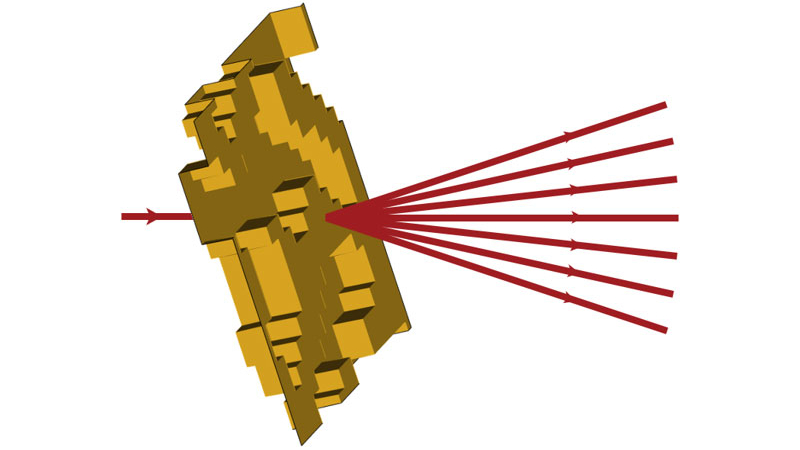
Diffractive Optical Elements: Optical Diffuser
The transition from a beam-splitting diffractive optical element (DOE) to an optical diffuser DOE is determined by the ratio of the DOE’s period size to the size of the incoming beam. When this ratio reaches unity or exceeds it, the diffraction orders commence to overlap, resulting in the emergence of a speckle pattern, as opposed to maintaining distinct orders. VirtualLab Fusion automatically modifies the DOE dimensions to accommodate a given input beam, enabling the design of a diffractive diffuser via the IFTA. Randomized lens arrays can be employed as an alternative to diffractive optical diffusers to achieve the functionality of an optical diffuser. In 2025, VirtualLab Fusion is set to unveil its lens-array type diffuser design features. Keep an eye out!
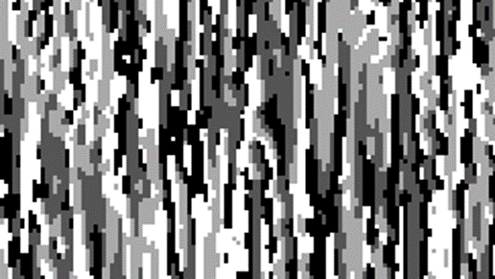
Light Shaping Components
VirtualLab Fusion provides techniques to design components for manipulating Gaussian beams, such as transforming them into top-hat profiles. It also offers an array-type approach with gratings or prisms per cell in the array for shaping LED light. Look out for the launch of additional light shaping design tools in VirtualLab Fusion set to debut in 2025.
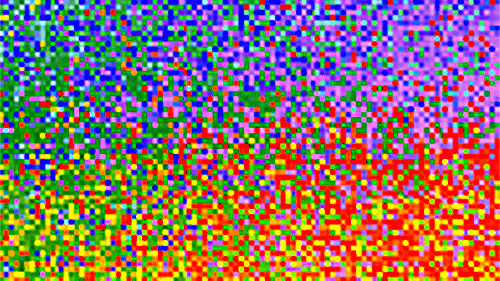
Lightguide for AR/MR Glasses
VirtualLab Fusion sets the benchmark for crafting and simulating lightguides, also known as waveguides, for use in augmented reality (AR) and mixed reality (MR) eyewear. Utilizing the comprehensive capabilities of multiscale simulation and design through VirtualLab Fusion, it is possible to simulate lightguides featuring integrated grating areas. This allows for the detailed analysis of energy flow, diffraction, interference, and coherence phenomena, and their influence on the device’s modulation transfer function (MTF).
